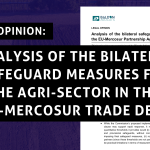MEDIA ADVISORY
*Corrections made on 24/09/21 at 14pm CEST: 1) it is not 40 but 61 coal-fired power plants that currently benefit from the ECT’s extensive investment protection provisions, according to IISD reports; 2) not only 8 but 16 coal-fired power plants would be protected under the ECT if the EU and MS withdrew.
-
Stunt in Brussels on Tuesday, 28 September at 10:30am CEST at Schuman Roundabout in front of the European Council building.
-
Protest with speeches and drums against the Energy Charter Treaty organised by the Belgian Platform for Just and Sustainable Trade to commence at 10:00am CEST at the same location.
-
High-resolution free to use photos will be available from 28 Sept, 12:00pm CEST at CAN Europe’s Flickr
-
New study (EMBARGOED until Tuesday, 28 September, 0:01am CEST) demonstrates the extent of investment protection for coal-fired power plants under the ECT.
The 7th negotiation round to reform the Energy Charter Treaty (ECT), which protects fossil fuel companies’ investments, will be held from 28 September to 1 October 2021. Campaigners are urging European countries to withdraw from the controversial agreement, rather than engage in talks that are doomed to fail [1].
On Tuesday, 28 September 2021 at 10:30am CEST, CAN Europe will build up an obstacle course in front of the European Council building, representing the thorny ECT reform process. Actors with giant paper mache heads will pose as Commission President von der Leyen and various heads of EU governments. They will have to choose whether to navigate the obstacle-ridden reform course leading to an uncertain climate future or take the straightforward withdrawal route instead.
In parallel to the negotiation round, the International Institute for Sustainable Development (IISD) will release a new study that examines the extent of investment protection for coal-fired power plants under the ECT [embargoed until Tuesday, 28 September at 0.01am CEST]. It reveals that 61 coal-fired power plants currently benefit from the ECT’s extensive investment protection provisions and that this would continue to be the case well into the 2030s under the best scenario proposed for ECT reform.
In contrast, according to the study, only 16 coal-fired power plants would be protected under the ECT if the EU and its Member States jointly withdrew from the treaty and neutralised the sunset clause. [2] By withdrawing, EU countries would significantly reduce their risk of being taken to arbitration over their coal phase-out plans.
The ECT is used by fossil fuel firms to claim compensation from countries that are passing climate change measures. Recently, two coal-fired power plant owners, RWE and Uniper, sued the Netherlands for its decision to phase-out coal by 2030, demanding billions of Euros in compensation [3]. Several other European countries still have to take steps to phase-out coal in line with their commitments under the Paris Agreement and could face similar compensation claims [4].
Cornelia Maarfield, Senior Trade and Investment Policy Coordinator at Climate Action Network Europe, commented: “The EU is on a mission impossible, trying to align the ECT with the Paris Agreement. The Treaty’s reform is too unambitious and won’t even make the ECT compatible with EU law. It’s time for EU states to acknowledge the huge barriers for a reform cannot be overcome. Withdrawal is the only route to comply with both the Paris Agreement and EU law.”
___ENDS___
Contacts:
Nina Tramullas, Communications Coordinator, CAN Europe. nina.tramullas@caneurope.org
Cornelia Maarfield, Senior Trade and Investment Policy Coordinator, CAN Europe. cornelia.maarfield@caneurope.org, +49 170 8765 271
Lukas Schaugg, Economic Law Fellow, International Institute for Sustainable Development, lschaugg@iisd.org
Notes to editors:
[1] See for instance https://www.euractiv.com/section/energy/news/leaked-diplomatic-cables-show-limited-progress-in-energy-charter-treaty-reform-talks/
[2] The sunset clause normally allows investors to sue states for another 20 years after withdrawal in relation to investments that were made before this withdrawal took effect. A legal study from July 2021 examines how this clause can be neutralised if states withdraw jointly: https://www.iisd.org/itn/en/2021/06/24/energy-charter-treaty-reform-why-withdrawal-is-an-option/
[3] Further background on the RWE claim, filed in February 2021, can be found here: https://caneurope.org/german-energy-rwe-energy-charter-treaty-claims-netherlands/ or https://icsid.worldbank.org/cases/case-database/case-detail?CaseNo=ARB/21/4. On the Uniper case, which was filed in April 2021, please see https://www.euractiv.com/section/energy/news/energy-charter-treaty-strikes-again-as-uniper-sues-netherlands-over-coal-phase-out/ or https://icsid.worldbank.org/cases/case-database/case-detail?CaseNo=ARB/21/22
[4] The fossil infrastructure protected by the Energy Charter Treaty in the EU, Great Britain and Switzerland is worth €344.6 billion. This is more than twice the total annual budget of the EU and corresponds to 660 euros per resident. Read more: https://www.investigate-europe.eu/en/2021/ect/



